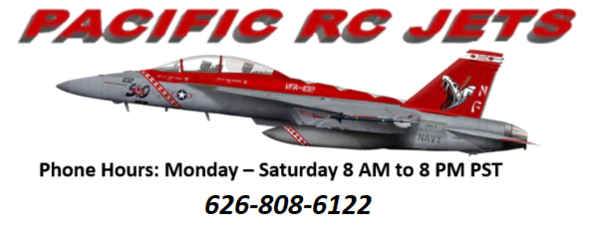Pneumatic Control Unit-PCU
JMP
Pneumatic Control Unit-PCU
The JMP Pneumatic Control Unit is designed to control the brakes, retract gear cylinders and landing gear door cylinders of the most complex r/c model aircraft. The goal of the PCU is to eliminate the complexity and disorganized nature of model pneumatic systems. Most installations have many t-fittings which cause unavoidable pressure drops across the entire system. This is eliminated with the PCU. Also included with the PCU are individual servo linkages and quality 1” readable pressure gauges for each of the three air circuits. The overall size of the completed PCU is 5.5” in length and 3.5” in width. From the top face of the gauges to the bottom edge of the brake servo it is 2.0” tall.
Either standard 1/8” OD or 4mm fittings can be ordered. Large models with increasing air cylinder diameters often now use 4mm size air lines. When ordering, let us know the number of retract gear cylinders and gear door cylinders and the proper fittings will be installed. Additional unused ports on the PCU lower side manifold are plugged, but can be changed later for some other model with different cylinder counts. Many combinations of fittings and control possibilities can be imagined.
The PCU can use three individual air supplies which will divide the retract gear, gear doors and main wheel brakes into separate air circuits. A manifold air fitting point for the JMP Failsafe Sequencer is also provided. This Sequencer senses a low air supply in the retract gear air circuit and shifts the retract gear and gear doors to the down position. Robust servos control the High Flow 2-Way Valves and proportional Brake Control Valve. Precision 1-Way Fill Valves are mounted to the PCU and feature a very neat and quick Tapered Filling Adapter. Also available is a more standard 1-Way Valve with a screw in fill fitting.
Single point control units have been available for some time. Their miniature control valves are fragile and unreliable. These valves are controlled by very weak actuators. Difficult and painful programming is found on nearly every one of these units. They are also produced offshore with no real way to deal with manufacturing and programming problems. Multiple manifold type air line attach points are not found on these digital type units. The “Old School” nature of the PCU makes it easy to use and deals directly with air line and plumbing challenges found in easy to complex models.
